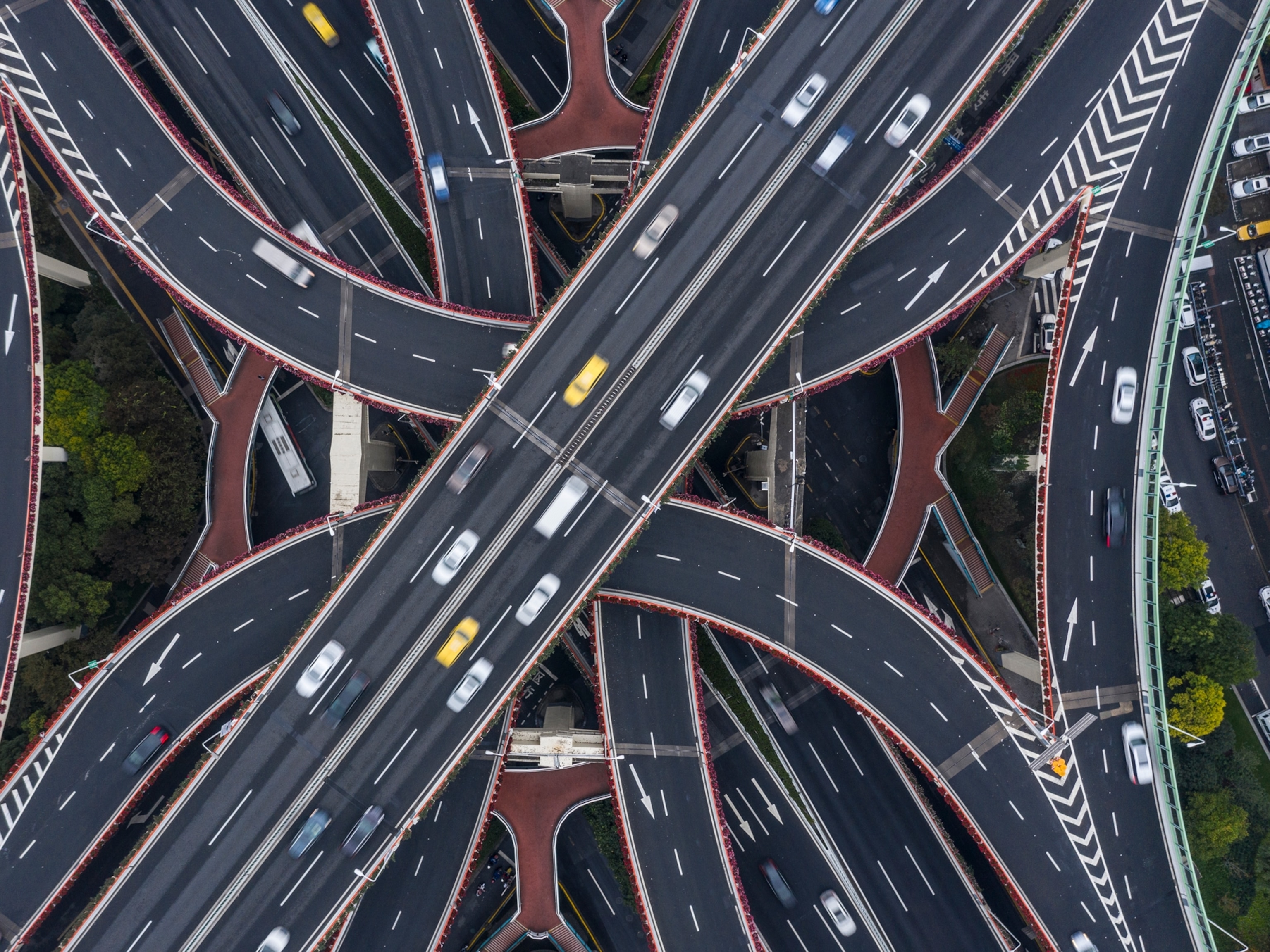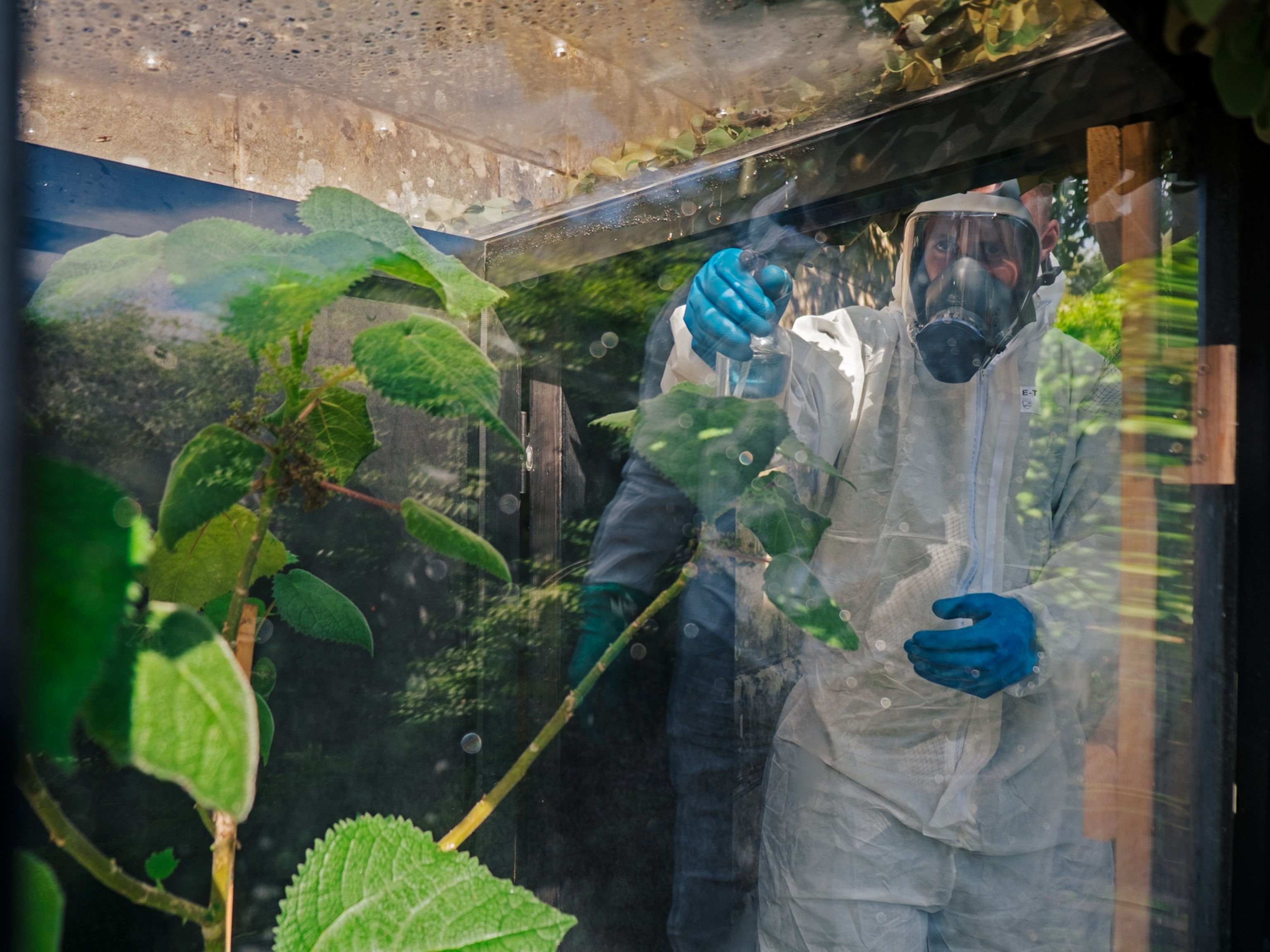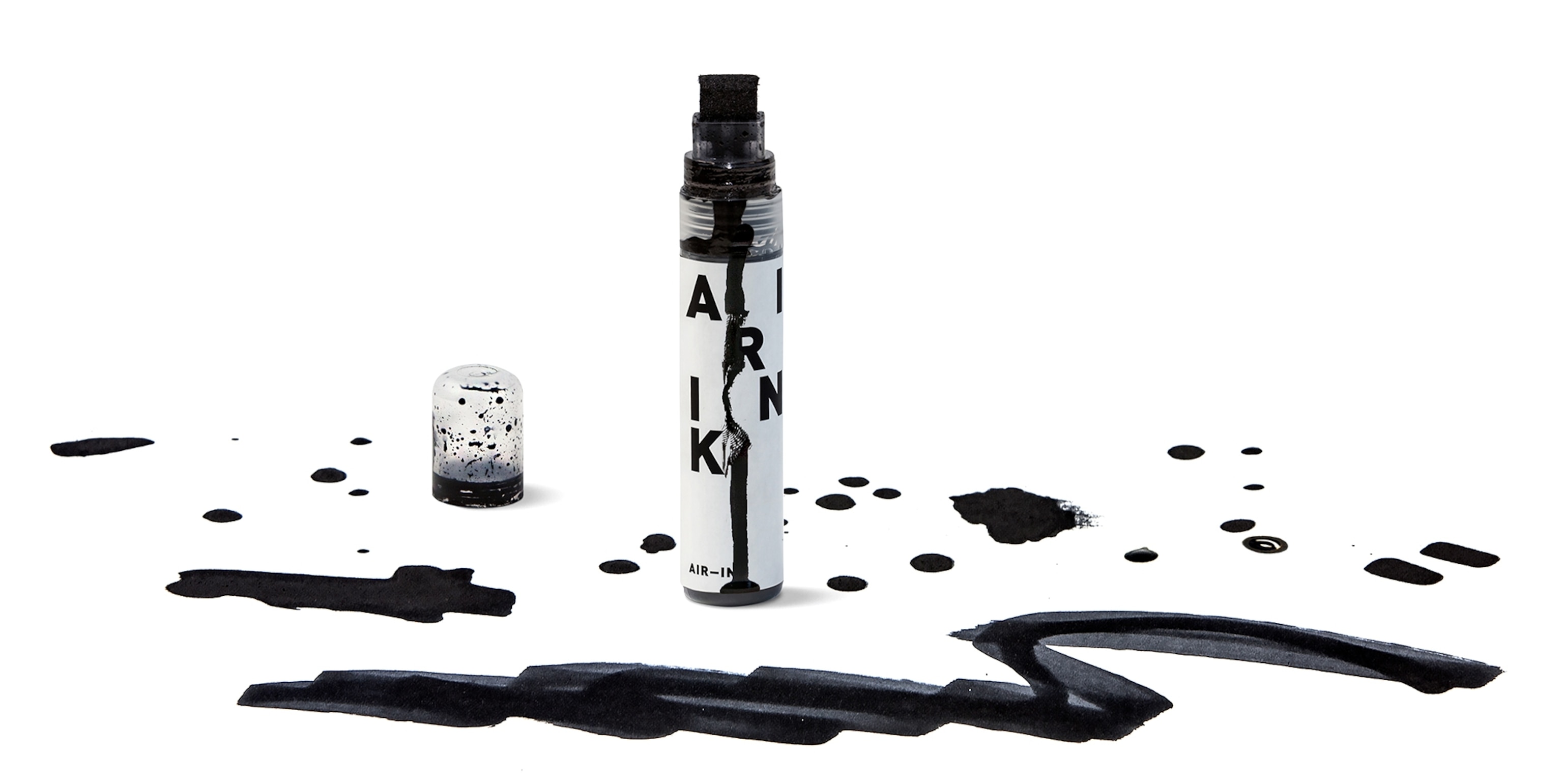
Turning soot into ink, algae into lighting, and other green ideas
With an eye toward cleaner air and eco-friendly design, innovators tie their creations into Earth’s perpetual processes.
Pollution that looks good on paper
Your printer cartridges and air pollution have something in common: carbon. The black particles emitted from burning fossil fuels make good pigment. That’s why a start-up in India makes Air-Ink, turning exhaust harvested from diesel generators into ink for uses from art to packaging. Computer giant Dell is eyeing the sooty brew for printing its product boxes. —Christina Nunez
How art clears the air
In the eclectic collection of the Victoria and Albert, the museum of art and design in London, only one object—out of more than 2.3 million—is alive: a chandelier. The fixture not only provides light but also absorbs light and purifies the air in the room. Hanging from the chandelier’s metal branches are 70 veined, synthetic pouches, “leaves” made green by the millions of algal microorganisms inside. The algae take in light from LEDs and the sun, and carbon dioxide from the air; when that mixes with water and nutrients circulating in the leaves, oxygen is produced. In short: This chandelier performs photosynthesis. When museumgoers visit the artwork, titled “Exhale,” breathing becomes a reciprocal activity: They breathe out CO2, which the algae replace with oxygen.
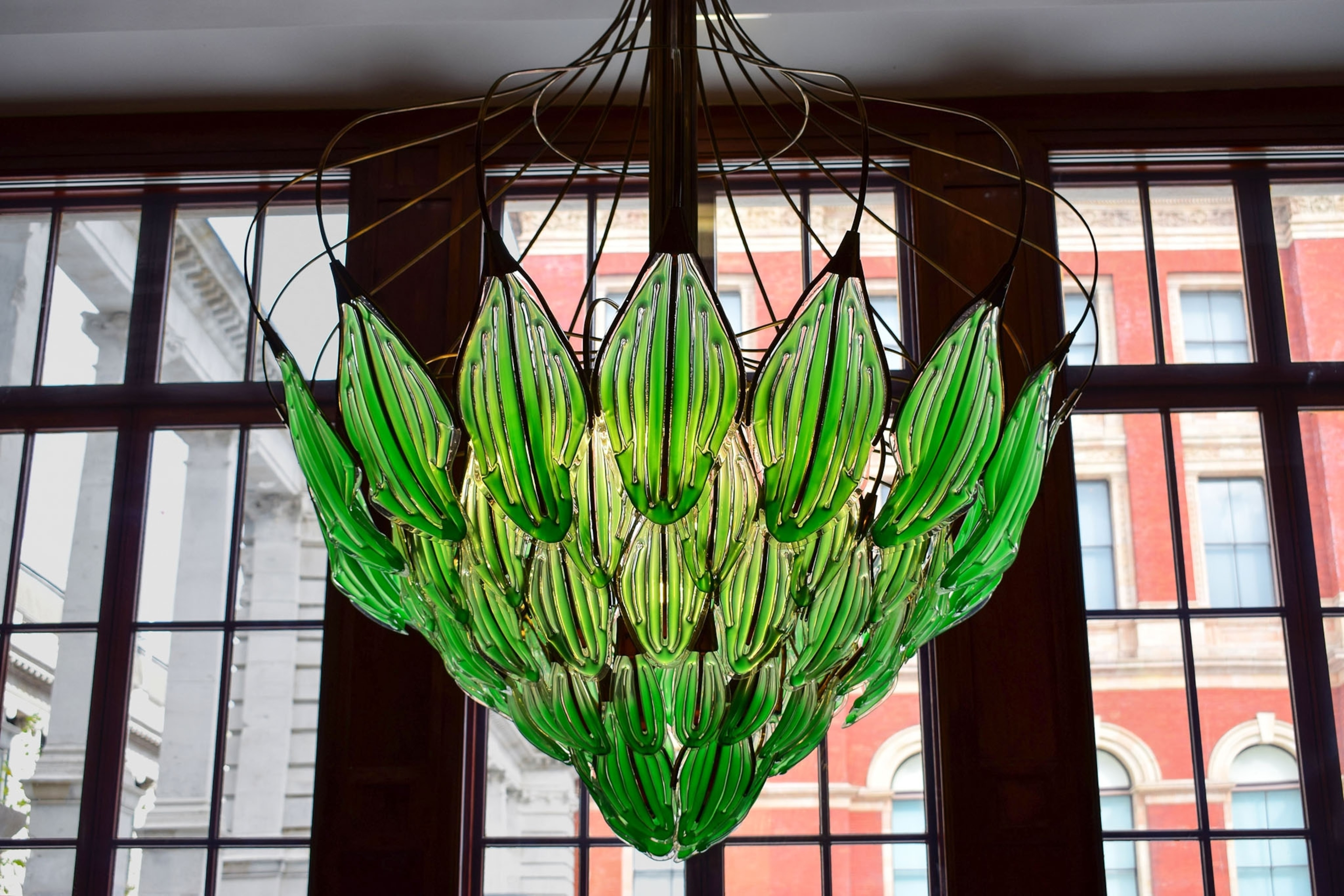
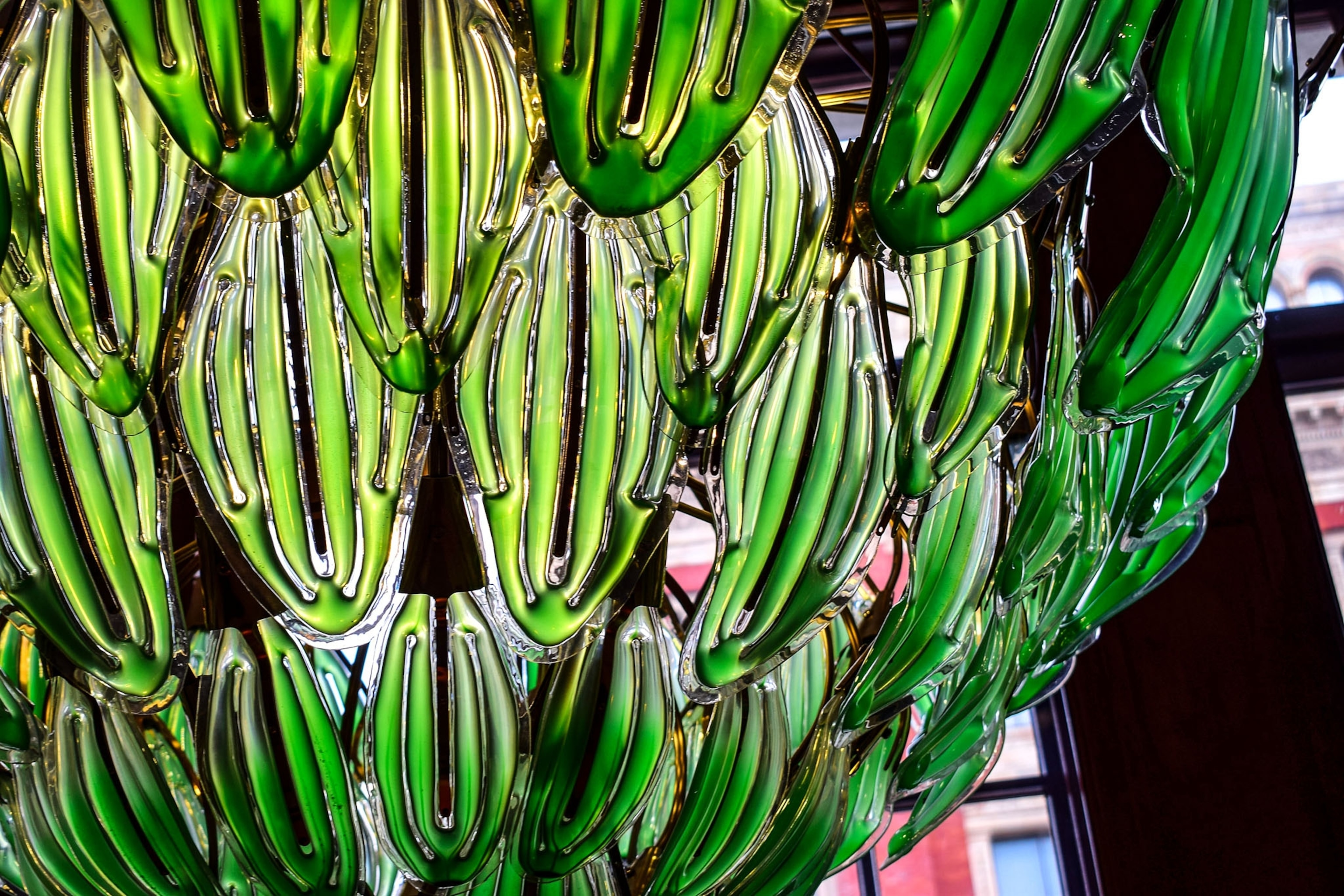
“Exhale” was devised by engineer-inventor Julian Melchiorri and his company, Arborea. The start-up is developing technologies to industrialize photosynthesis for use in a sustainable food system, as well as to fight climate change and pollution. Melchiorri says algae work so well in these applications that they soon could be in wider use: in “biosolar” panels on buildings’ rooftops, and even in spaceships and space colonies.
—H
icks Wogan
Green grow his towers
Plant-covered edifices have sprouted worldwide since Italian architect Stefano Boeri created the Bosco Verticale, or Vertical Forest, in Milan in 2014. Two residential towers wrapped in 800 trees and 5,000 shrubs, the Bosco thrilled tenants and critics alike with its luxuriant aesthetic, sun-shielding facade, and eco-friendliness. The project has been emulated from Amsterdam to Shanghai. Boeri is designing green towers on several continents and a green vertical city near Cancún, Mexico.
—Sam Lubell

This story appears in the May 2021 issue of National Geographic magazine.
For more stories about how to help the planet, go to natgeo.com/planet.

